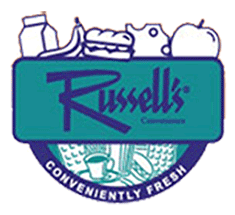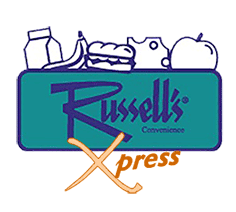Packing a Foodservice Solution
By Joe Bush, Contributing Editor.
Russell’s Convenience Stores got lucky in the mid-1990s when an upstart bakery approached the chain about selling its sandwiches at the chain’s company-owned locations. Russell’s, based in Denver, operates 12 stores in the lobbies of downtown office buildings, plus three units in Los Angeles and one in Hawaii. It was selling basic wedge sandwiches from a local vendor at the time and was looking for an upscale offering that captured repeat business.
Though the new baker’s sandwiches were pricey, Russell’s gave it a shot. “We put a few different sandwich varieties in our Denver stores with the thinking, ‘Oh, they’re kind of on the high end, I don’t know if they’re going to sell,’” said Russell’s marketing manager Vicki Jackson. “But the response was overwhelming. We blew out of them immediately.”
The relationship has endured and continues expanding today. The upstart was Udi The Sandwich Man and is now known nationwide as Udi’s Food, which also operates a full-service restaurant, catering business and a host of granola snack items and gluten-free products aimed at its core Colorado market.
Russell’s is the only convenience store to sell Udi’s sandwiches and salads. Udi’s maintains a commitment to quality and detail to anticipate today’s consumer desire for different tastes and higher quality ingredients.
Sandwiches on a Roll
A study by Chicago-based restaurant-consulting firm Technomic found that only about half of consumers polled (52%) were satisfied with the variety of sandwiches available at sub shops and delis, while just 42% were satisfied with the sandwich offerings at full-service restaurants.
Sandwiches have long been a convenience store staple—triangle-shaped, plastic-clad and white-breaded—that have contributed to the industry’s image problem concerning foodservice from a variety and health standpoint.
As the industry focused on foodservice over the past decade or so, sandwiches have improved. Whether delivered by vendors, made in commissaries or freshly-prepared on-site, convenience stores are competing effectively, and in some case outselling, national sandwich chains.
“The bottom line here is convenience stores have to start thinking more along the lines of restaurants,” said Tim Powell, director of research and consulting for Technomic. “Rutter’s gets it, Quick Chek gets it, Thornton’s gets it. Those c- store chains are acting more like fast-casual-style sandwich shops than gas stations with roller grills are winning the business. They are expanding their menus and capturing new customers.”
For instance, Quick Chek, of Whitehouse Station, N.J., has sandwich combinations like jalapeño ranch turkey club and fiesta vegetarian sub; Rutter’s of York, Pa., has a fried chicken club and a Philly cheesesteak sub; Williamsville, N.Y.’s Wilson Farms sells a ham and pepper jack on marble rye sandwich and a turkey bacon wrap. These are not your father’s ham and cheese on white bread sandwiches. The variety, quality, consistency and price point at top quartile chains are superb.
The sandwiches Russell’s gets from Udi’s include those made on artisan bread also baked fresh by Udi’s bakery. Sandwich varieties include jalapeño cheddar and chicken breast or turkey and cheese with apple slices. Some have aioli and gourmet cheeses. Russell’s supplies the condiments allowing customers to customize their meals even further. The artisan sandwiches retail for $5.29.
Udi’s also makes and delivers lower-priced basic sandwiches ($4.09) to Russell’s stores, while a third choice comes from Tielke’s Sandwiches, delivered through distributor McLane. The Udi’s sandwiches have a two-day shelf life, while the Tielke offering ($2.99 to $3.99) has a 30-day shelf life. All are merchandised in open-air coolers.
Udi’s delivers daily to Russell’s depending on the store. Higher volume stores get anywhere from 12-15 items—salads and sandwiches—to as many as 40 or 50.
Grooming Customer Demand
Jackson said at some stores customers wait outside for the store to open, so they can grab the sandwich they want for lunch.
“We do turn an inventory every afternoon about 2 p.m. and that determines the delivery for the next day,” said Jackson. “Now that we call in the orders we have a little bit better handle on the waste.”
In its three Los Angeles stores and Hawaiian location, Russell’s also has a local sandwich vendor. It’s another of the options available if a chain can’t afford to make its own or pay a commissary. Local and regional vendors are effective at attracting a fan base not familiar with national suppliers like Landshire or Pierre.
Powell, of Technomic, recently did a study on commissaries. “Variety is tough from a cost standpoint,” he said. “Independent commissaries can only begin to increase their variety as they bring more convenience stores and supermarkets into the fold, but as the economies of scale go up, the variety expands.”
While third-party distribution might be a little more expensive, the economics will depend on the chain. “If a convenience store wanted to do sandwiches themselves, they’d have to start factoring in waste and spoilage and the cost of additional labor,” Powell said. “I think proprietary would exceed the cost of third-party distribution in the short term. If you’ve been in the business for awhile, and you understand it, like Wawa or Sheetz does, then you don’t necessarily have to do it, but even those guys need a fill-in offering.”
Even bigger chains that do a great job with foodservice may have certain marketing areas where they want to offer a variety of products, but lack the distribution network to deliver items to those stores at an efficient price. “They may engage a commissary to provide 10 different styles of deli sandwiches they couldn’t internally,” Powell said.
Developing New Products
Since variety needs product development, convenience stores in general have lagged behind other foodservice channels. It’s a specialized area not many chains can afford to staff.
Jackson said Udi’s merely asks what new products it is interested in and will even conduct random customer intercepts at the store.
Bigger chains, like Kwik Trip, of LaCrosse, Wis., can afford their own product development. Kwik Trip not only has its own bakery, it has a commissary as well, and its truck fleet delivers cold sandwiches and five-inch subs daily to stores.
As hot sandwiches become popular, chains are heating cold sandwiches from the cooler in convection ovens, and marketing them in hot display cases.
Hot sandwiches at Kwik Trip are prepared at the store and sold as grab and go. Kwik Trip’s latest creation is a cold turkey and Swiss on cranberry wild rice bread, for $3.29.“We have a food research and development team constantly evaluating new options,” said John McHugh, Kwik Trip’s manager of corporate communications.
Ideally, the right sandwich program will attract core customers while cultivating a steady stream of new business.“The next step is trying to draw in your higher income males and females,” Powell said. “The big evolution is trying to attract more users outside of the heavy (18-34 year old male) sandwich buyer group.”
Merchandising Matters
Prepackaged food sales are booming nationwide and new choices are springing up to help convenience store retailers grow in-store sales.
Successful prepackaged food merchandising is all about display, said Jerry Weiner, vice president of foodservice for Rutter’s Farm Stores in York, Pa. “Grab-and-go sales have tripled since we moved products from four-foot open-air cases to six-foot-by-eight-foot walk-around, open-air islands,” Weiner said. “Our sales just exploded.”
The growing popularity of the grab-and-go format, which is highly desirable among today’s time-pressed consumers, is responsible for the boost. “The demand is there, but the key is to offer a wide array of high-quality, fresh products,” Weiner said. “I really think variety is crucial, which is why you need so much space to present it.”
Rutter’s new display space allowed stores to add a tremendous amount of variety and attracted customers the company wasn’t able to reach before. It ultimately began making the 50-store chain a top destination. “I think a lot of the growth is in the grab-and-go area, assuming you can give customers a wide choice of high-quality, fresh products,” Weiner said.

